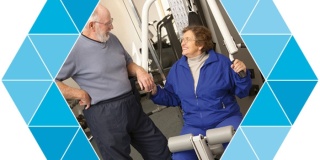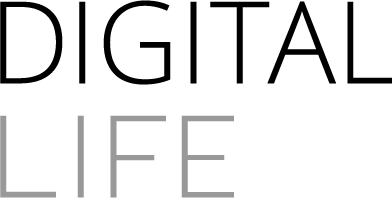Project 2Do2Digital launched
16-02-2023

Digital tool supports healthy lifestyle
The first advice to elderly people (55+) with overweight and type 2 diabetes is to lose weight. To support them in this, the 13-week lifestyle program 2Do was developed. Focused on losing weight with muscle retention, through training and a healthy diet. How do you ensure that the elderly retain their healthy(er) lifestyle after this guidance? Researchers suspect that a digital tool offers a solution.
Recently, the research theme People in Movement (MIB) received an incentive grant of 40,000 euros from the Center of Expertise Urban Vitality (CoE UV) of the Amsterdam University of Applied Sciences (HvA). To develop such a tool during the 2Do2Digital research project.
‘We will be dealing with a strong aging population in the Netherlands in the coming decades,’ says lecturer-researcher Robert Memelink. In addition, we are seeing more and more elderly people who are overweight or obese. As a result of these developments, more and more elderly people are suffering from type 2 diabetes. This leads to more health problems, a lower quality of life, and higher healthcare costs and burdens.
Lifestyle intervention 2Do
Memelink is a lecturer at the Nutrition and Dietetics program and a researcher at the Nutrition and Exercise research group. ‘When older people with obesity lose weight, they normally lose an important part of muscle mass. This is unfavorable because older people naturally lose muscle mass and function. We call the latter sarcopenia. It ensures that older people are less self-reliant over time. They move less and run a greater risk of falling, for example.
From the Nutrition and Exercise professorship, we previously wondered whether it is possible to help elderly people with obesity and type 2 diabetes lose weight while retaining muscle mass. Through training and extra protein intake. And would they be able to process glucose peaks in their bodies better as a result?'
To find answers to these questions, the recently completed research project PROBE started in 2014. Memelink: 'Based on this study, we developed the lifestyle intervention 2Do: strength training and intensive interval training in combination with a protein-rich, energy-restricted diet. Older people with obesity and type 2 diabetes trained for 13 weeks in a group under intensive supervision of a dietician and personal trainers. In this way they managed to lose almost a kilo of fat mass per month and to maintain their muscle mass. In the group that received an extra protein drink, the muscle mass even increased slightly. Insulin sensitivity also increased in this group. That means they could process the glucose from their food better.'
Digital support
The 2Do lifestyle intervention was recently recognized by the Healthy Living Counter of the National Institute for Public Health and the Environment (RIVM). Memelink: 'Our intervention turned out to be successful because participants are intensively supervised in a group and actively get to work themselves. They stimulate each other. After the program, for example, they could take their dog for a longer walk or romp with their grandchildren.
During the study, we saw that 70% of the participants were still more active than before after six months. More than 40% managed to maintain a healthier eating pattern. We want an even higher percentage of participants to continue these adjustments. That is why we are investigating the use of a digital tool in 2Do2Digital.'
Digital Life
The expertise of Memelink's fellow researcher Annette Brons comes in handy here. Brons is a lecturer-researcher for the Digital Life lectorate and the HBO-ICT program at the AUAS. She teaches the minor and the Master's in Applied Artificial Intelligence (AAI) and works as a postdoc researcher at the research theme People in Movement (MIB). Brons: 'We know from previous research that sustainable behavioral changes take a lot of time. By developing a digital tool, we hope to offer people the opportunity to follow up the 2Do lifestyle intervention themselves.
To ensure a smooth transition to digital support, we want them to start using the digital tool together with the healthcare provider during the 13-week 2Do program in the near future. So that they get used to using it.'
Digitize Elements
The researchers, supported by students of Nutrition and Dietetics, started this month with an analysis of elements from the lifestyle intervention that are suitable for digital use. Brons: ‘Think about setting goals. Or linking actions to those goals (action planning). To this end, we will question the care providers who are currently working with the 2Do program. Given the target group, there is a good chance that we will develop a protein module in which people can easily keep track of how much protein they consume and whether the quality of these proteins is sufficient. For people with type 2 diabetes, awareness around carbohydrates are also very important. During this research we will analyze what we can do in that area in follow-up research.
When we know which elements of the existing 2Do program are suitable for digital use, we map out their requirements and functionalities. Do you want to be able to set digital goals? Then you need certain buttons and options. Using a list of requirements, we design a prototype that we test among participants and healthcare providers. We then have the tool built by an external partner. Because we can build on digital elements of the MIB platform during this project, we can achieve a lot in a relatively short time.'
Stimulating independence
What will the digital tool add? Brons: 'After the first 13 weeks of the group program, patients can continue to work independently on their goals. Care providers can support them if they wish. How they can achieve goals and maintain results. In this way we stimulate people's health and independence in the long term.'
This news item was previously published on the AUAS website Urban Vitality

